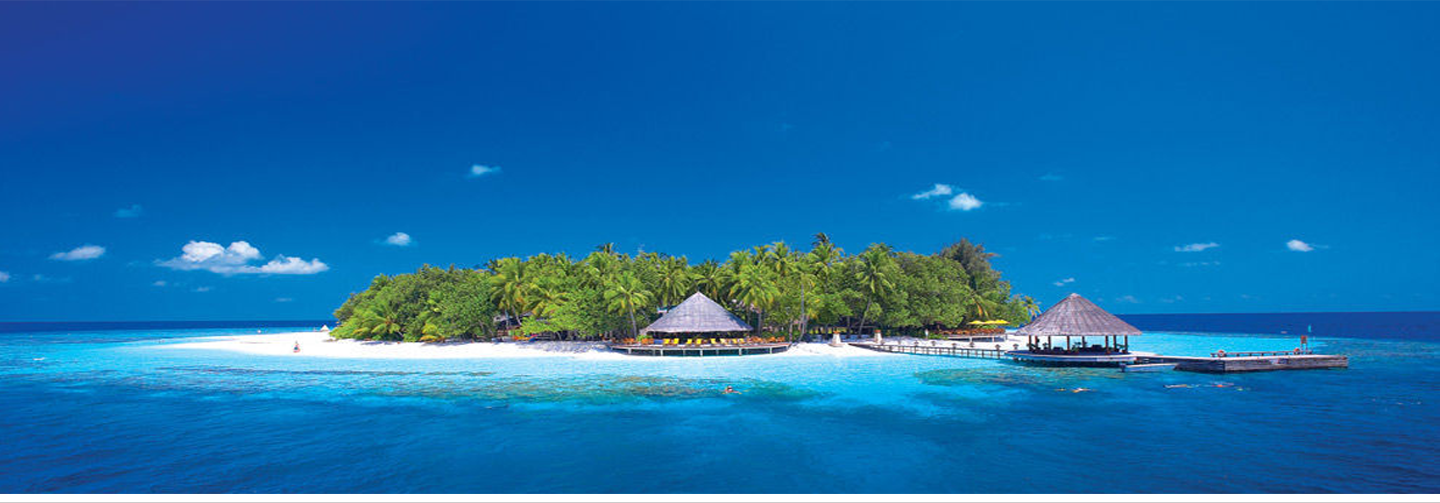EXPERIENCE OF NEPAL
Tour Duration : 14 Days
 Boudha, Pashupatinath, Swayambhunath and Kathmandu Durbar square:
Boudha, Pashupatinath, Swayambhunath and Kathmandu Durbar square:
Boudha: The base of the stupa takes the shape of a mandala (symbolising earth): on this four tiered base sits the dome (symbolising water): then comes the spire (symbolizing fire): the umbrella (symploising air); and the pinnacle (symbolising ether). The Buddha's watchful eyes gaze out in four directions from the square base of two normal eyes and the 'nose' is not a nose at all but the Nepali number one, signifying the oneness of all life. The spire is made up of 13 steps, representing the 13 stages on the journey to nirvana
Pashupati Nath: The most important Hindu temple in Nepal. It's one of the most important Shiva temples on the subcontinent and draws numerous devotees from all over India, including many colourful sadhus, those wandering ascetic Hindu holy men. Shiva is the destroyer and creator of the Hindu Pantheon and appears in many forms.
His 'temple' forms are probably brst known, particularly his appearances in Nepal as the cruel and destructive Nhairabs, but he also has peaceful incarantion including those of Mahadev and Pashupati, the lord of the beasts. As the shepherd of both animals and humans, Shiva as Pashupati shows tis most pleasant and creative side.
Swayambunath: The Buddhist temple of Swayambunath, situated on the top of a hill west of the city, in one of the most popular and instantly recognizable symbols of Nepal. The temple is colloquially known as the 'monkey temple' after the large tribe of handsome monkeys which guards the hill and amuses visitors and devotees with tricks, including sliding gracefully down the double banisters of the main stairway to the temple. Geologists believe that the Kathmandu valley was once a lake and legends relate that the hill one which Swaymabhunath stands was an island in that lake. It is said that emperor Ashoka paid a visit to the site over 2000 years ago. An inscription indicates that King Manadeva ordered work done on the site in 460 CE and by the 1200s it was an important Buddhist center. In 1346 Mughal invaders from Bengal broke open the stupa to search for gold under the Mallas various improvements were made and the great stairway to the stupa was construcked by King Pratap Malla in the 17th century.
Kathmandu Durbar Square: Durbar in Nepal 'palace' and in Patan and Bhaktapur, as well as Kathmandu, there are Durbar squares in front of the old palaces. The King no longer lives in the old Royal Palace in Kathmandu: the palace was moved north to Narayanhiti about a century ago. At that time it was on the edge of the city, now it's close to the popular tourist area of Thamel. Clustered around the central Durbar Square and the old Royal Palace (Hanuman Dhoka), numerous interesting temples, the Kumari Chowka or Kumari Bahal (House of the Living Goddess) and Kasthamandap (House of wood). It's easy to spend hours wandering around Durbar Square and the adjoining Basantapur Square. This is very much the center of old Kathmandu and watching they would go by from the terraced platforms of the towering Maju Deval is a wonderful way to get a feel for the city. Although many of the buildings around the square are very old, the great earthquake of 1934 caused a great deal of damage and many were rebuilt, not always in their original form.
Thimi: Thimi is the fourth largest town in the valley outranked only by Kathmandu, Patan and Bhaktapur. It's a typical Newari town and its capable people (the name of the town is derived from this Newari expression) operate thriving cottage industries producing pottery and paper-made masks. They also grow vegetables for the markets of Kathmandu.
Changu Narayan: The beautiful and historic temple of Changu Naraya Stands on a hilltop at the eastern end of the valley, about four km north of Bhaktapur. Although the temple dates from 1702, when it was rebuilt after a fire, its origins go right back to the 4th century and there many important stone images and sculptures dating from the Lichhavi period.
Bhaktapur: The third of the valley's ancient cities is another century-long rival of Kathmandu. It has an impressive number of artistic treasures: it is rightly called "a living museum" as well as the most medieval city of the valley.
The oldest part of the town is around Tachupal Tole (Dattatraya Square), to the east. Bhaktapur was the capital of the whole valley during the 14th to 16th centuries and during that time the focus of the town-shifted west, to the Durbar Square area. Much of the town's great architecture dates from the end of the 17th century during the rule of King Bhupatendra Malla.
Lunch at Break
Kirtipur: Strung out along a ridge south- west of Kathmandu, the small town of Kirtipur is a relatively neglected and timeless backwater despite its proximity to the capital. At one time it was associated with Patan and then became a mini- country in its own right. During the 1768 conquest of the valley by Gorkha's King Prithivi NarayanShah it was clear that Kirtipur, with its superbly defensible hilltop Position, Would be the key to defeating the Mall countrys sot it was here the Gorkha king struck first and hardest. Kirtipur's ridge is actually two hills, with a lower saddle between them. The Chilanchu Vihara tops the southern hill and has a central stupa with four smaller stupas, numerous statues and bells and Buddhist monastery buildings around it.
Chobar: The picture square little village of Chobar tops a hill overlooking the Bagmati River where it flows through the Chobar Gorge. Although the gorge is a regularly visited attraction, far fewer people come to Chobar itself. Perhaps they're put off by the steep hill. The views of Himalaya and town are outstanding.
5:45 Tea/coffee
6:00 Elephant ride/ bird watching
8:00 Breakfast
9:00 Canoe ride/ elephant briefing/ swimming and bath
1:00 P.M. Lunch
3:00 Elephant ride/ Nature walk/ canoe ride
7:00 Dinner
5:45 Tea/coffee
6:00 Elephant ride/ bird watching
8:00 Breakfast
9:00 Canoe ride/ elephant briefing/ swimming and bath
1:00 P.M. Lunch
3:00 Elephant ride/ Jungle drive/ canoe ride
7:00 Dinner
8:00 Breakfast
9:00 Departure from the chitwan and drive to Pokhara over night hotel
Day 01: ARRIVAL TRANSFER TO KATHMANDU
Welcome to Kathmandu! You will be met by representatives who will provide transportation to your hotel and answer all your questions about the schedule of tours. No activities are planned for the day. You are free to explore picturesque down town Kathmandu. A representative will be happy to accompany you, if desired.
Day 02: KATHMANDU SIGHTSEEING
 Boudha, Pashupatinath, Swayambhunath and Kathmandu Durbar square:
Boudha, Pashupatinath, Swayambhunath and Kathmandu Durbar square:Boudha: The base of the stupa takes the shape of a mandala (symbolising earth): on this four tiered base sits the dome (symbolising water): then comes the spire (symbolizing fire): the umbrella (symploising air); and the pinnacle (symbolising ether). The Buddha's watchful eyes gaze out in four directions from the square base of two normal eyes and the 'nose' is not a nose at all but the Nepali number one, signifying the oneness of all life. The spire is made up of 13 steps, representing the 13 stages on the journey to nirvana
Pashupati Nath: The most important Hindu temple in Nepal. It's one of the most important Shiva temples on the subcontinent and draws numerous devotees from all over India, including many colourful sadhus, those wandering ascetic Hindu holy men. Shiva is the destroyer and creator of the Hindu Pantheon and appears in many forms.
His 'temple' forms are probably brst known, particularly his appearances in Nepal as the cruel and destructive Nhairabs, but he also has peaceful incarantion including those of Mahadev and Pashupati, the lord of the beasts. As the shepherd of both animals and humans, Shiva as Pashupati shows tis most pleasant and creative side.
Swayambunath: The Buddhist temple of Swayambunath, situated on the top of a hill west of the city, in one of the most popular and instantly recognizable symbols of Nepal. The temple is colloquially known as the 'monkey temple' after the large tribe of handsome monkeys which guards the hill and amuses visitors and devotees with tricks, including sliding gracefully down the double banisters of the main stairway to the temple. Geologists believe that the Kathmandu valley was once a lake and legends relate that the hill one which Swaymabhunath stands was an island in that lake. It is said that emperor Ashoka paid a visit to the site over 2000 years ago. An inscription indicates that King Manadeva ordered work done on the site in 460 CE and by the 1200s it was an important Buddhist center. In 1346 Mughal invaders from Bengal broke open the stupa to search for gold under the Mallas various improvements were made and the great stairway to the stupa was construcked by King Pratap Malla in the 17th century.
Kathmandu Durbar Square: Durbar in Nepal 'palace' and in Patan and Bhaktapur, as well as Kathmandu, there are Durbar squares in front of the old palaces. The King no longer lives in the old Royal Palace in Kathmandu: the palace was moved north to Narayanhiti about a century ago. At that time it was on the edge of the city, now it's close to the popular tourist area of Thamel. Clustered around the central Durbar Square and the old Royal Palace (Hanuman Dhoka), numerous interesting temples, the Kumari Chowka or Kumari Bahal (House of the Living Goddess) and Kasthamandap (House of wood). It's easy to spend hours wandering around Durbar Square and the adjoining Basantapur Square. This is very much the center of old Kathmandu and watching they would go by from the terraced platforms of the towering Maju Deval is a wonderful way to get a feel for the city. Although many of the buildings around the square are very old, the great earthquake of 1934 caused a great deal of damage and many were rebuilt, not always in their original form.
Day 03: KATHMANDU SIGHTSEEING
Thimi, Changu Narayan, Bhaktapur:
Thimi: Thimi is the fourth largest town in the valley outranked only by Kathmandu, Patan and Bhaktapur. It's a typical Newari town and its capable people (the name of the town is derived from this Newari expression) operate thriving cottage industries producing pottery and paper-made masks. They also grow vegetables for the markets of Kathmandu.
Changu Narayan: The beautiful and historic temple of Changu Naraya Stands on a hilltop at the eastern end of the valley, about four km north of Bhaktapur. Although the temple dates from 1702, when it was rebuilt after a fire, its origins go right back to the 4th century and there many important stone images and sculptures dating from the Lichhavi period.
Bhaktapur: The third of the valley's ancient cities is another century-long rival of Kathmandu. It has an impressive number of artistic treasures: it is rightly called "a living museum" as well as the most medieval city of the valley.
The oldest part of the town is around Tachupal Tole (Dattatraya Square), to the east. Bhaktapur was the capital of the whole valley during the 14th to 16th centuries and during that time the focus of the town-shifted west, to the Durbar Square area. Much of the town's great architecture dates from the end of the 17th century during the rule of King Bhupatendra Malla.
Day 04: KATHMANDU SIGHTSEEING
Patan Durbar Square, Kirtipur, Chobar Patan Durbar Square: Patan is separated from Kathmandu only by the Bagmati River and is the second largest town in bally. It is sometimes referred to as Lalitpur, which means 'city of beauty' Patan has a long Buddhist history and the four comers of the city are marked by stupas said to have been erected by the great Buddhist emperor Ashoka around 250 B.C. Later inscriptions refer to palaces in the 5th century B.C. although Patan's great building boom took place under the Mallas in the 16th, 17th and 18th centuries. Patan's central Durbar Square is absolutely packed with temples: it's an architectural feast with a far greater concentration of temples per sq. meter than in Kathmandu or Bhaktpur. Numerous other temples of widely diverse style as well as many bahals (Buddhist monasteries) are scattered around this fascinating town.
Lunch at Break
Kirtipur: Strung out along a ridge south- west of Kathmandu, the small town of Kirtipur is a relatively neglected and timeless backwater despite its proximity to the capital. At one time it was associated with Patan and then became a mini- country in its own right. During the 1768 conquest of the valley by Gorkha's King Prithivi NarayanShah it was clear that Kirtipur, with its superbly defensible hilltop Position, Would be the key to defeating the Mall countrys sot it was here the Gorkha king struck first and hardest. Kirtipur's ridge is actually two hills, with a lower saddle between them. The Chilanchu Vihara tops the southern hill and has a central stupa with four smaller stupas, numerous statues and bells and Buddhist monastery buildings around it.
Chobar: The picture square little village of Chobar tops a hill overlooking the Bagmati River where it flows through the Chobar Gorge. Although the gorge is a regularly visited attraction, far fewer people come to Chobar itself. Perhaps they're put off by the steep hill. The views of Himalaya and town are outstanding.
Day 05: KATHMANDU-CHITWAN
After breakfast drive to Chitwan National Park on the way you will enjoy 2-3 hour Rafting. Overnight at camp.
Day 06:WILDLIFE ACTIVITIES
5:30 A. M. Wake up call
5:45 Tea/coffee
6:00 Elephant ride/ bird watching
8:00 Breakfast
9:00 Canoe ride/ elephant briefing/ swimming and bath
1:00 P.M. Lunch
3:00 Elephant ride/ Nature walk/ canoe ride
7:00 Dinner
Day 07:WILDLIFE ACTIVITIES
5:30 A. M. Wake up call
5:45 Tea/coffee
6:00 Elephant ride/ bird watching
8:00 Breakfast
9:00 Canoe ride/ elephant briefing/ swimming and bath
1:00 P.M. Lunch
3:00 Elephant ride/ Jungle drive/ canoe ride
7:00 Dinner
Day 08: CHITWAN-POKHARA
Morning free for packing
8:00 Breakfast
9:00 Departure from the chitwan and drive to Pokhara over night hotel
Day 09: POKHARA SIGHTSEEING
Davi's fall: It is also known as Patale Chango, is an awesome waterfall laying 2 km southwest of Pokhara. During summer and rainy season, the waterfall takes its real form, with gushing water splashing and making its way through the rocks.
Gupteshwor Cave: Just opposite of Devis's fall, on the other side of the road, there is Gupteshwor Cave. This cave is popular for the different natural forms made from limestone deposits. Photography is strictly prohibited inside the cave.
Mahendra Cave and Minstrel (Gaine) Village: This limestone cave is named after King Mahendra and is situated in Bltulechaur, a village in the northern part of Pokhara valley. Professional minstrels known as Gaines live in this village.
Gupteshwor Cave: Just opposite of Devis's fall, on the other side of the road, there is Gupteshwor Cave. This cave is popular for the different natural forms made from limestone deposits. Photography is strictly prohibited inside the cave.
Mahendra Cave and Minstrel (Gaine) Village: This limestone cave is named after King Mahendra and is situated in Bltulechaur, a village in the northern part of Pokhara valley. Professional minstrels known as Gaines live in this village.
Day 10: BOATING AND HIKING AT POKHARA
Boating at Phewatal Lake. Phewa Lake is the most popular destination for travelers wanting to indulge in recreational boating. It is the second largest lake in the country and measureroughly 1.5 by 4 km. it's eastern shore, also known as lakeside or Baidam, is the center of tourist activity in Pokhara. Renting a boat for a couple of hours and heading out to the lake bordering the forested hill, and taking a swim, can be the highlight of a warm day. Then hike to World Peace Pagoda: This pagoda is situated on the top of a hill on the southern shore of Phewa lake. It has four images of Buddha facing in four directions. The pagoda is an impressive sight and its hilltop location commands great view. It is a great vantage point, which offers spectacular views of the Annapurna range and Pokhara town.
Day 11: HIKING AROUND POKHARA
Naudada and Sarang kot: Naudada is situated west of Pokhara, High up on the ridge north of Phewa Lake. From Naudada you can start walking towards Sarangkot through Kaski kot. In Kaski kot, you will find ruins of the fort of Kaski kings. From Sarangkot descent down to Bindebashini Temple and then drive back to Hotel.
Day 12: POKHARA-KATHMANDU FLIGHT
After having late breakfast you will take flight to Kathmandu and transfer to hotel.
Day 13: REST DAY OR MOUNTAINFLIGHT
Morning 6:00 o'clock your driver will be out side of the hotel to take you to the airport for the Mountain flight and will bring you back after the trip and free day for the shopping.
Day 14: KATHMANDU-HOMETOWN
Drive to Airport for your onward journey.
Test Data

Our Package

Our Package

Our Package
Special ToursJust let us know about your dreams and we will fulfill the same.
newsletter
Coming Soon...











